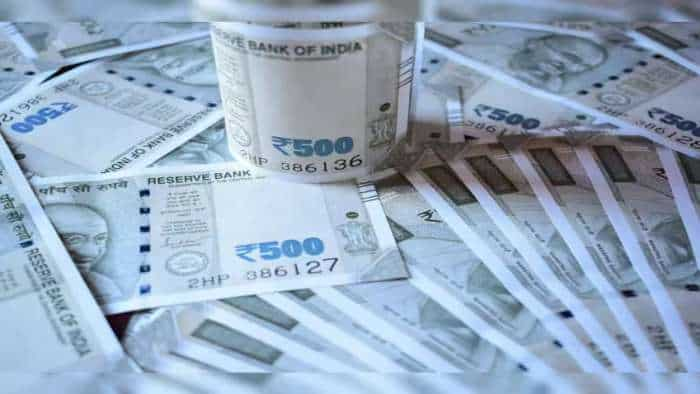7th Pay Commission: How much gratuity one can get on Rs 15K and 20K basic salaries; know calculations
7th Pay Commission: When the central government announced a four per cent hike in dearness allowance (DA) and dearness releif (DR) for its employees and pensioners, it also announced an increase in House Rent Allowance (HRA). Apart from these two changes, Centre also announced a big change in the form of a tax exemption limit on gratuity of a central government employee. The limit on tax exemption has been increased from Rs 20 lakh to Rs 25 lakh. However, equally important for an employee is to know their gratuity amount at the time of retirement. Know how much gratuity you will get if your basic salary is Rs 15000 or Rs 20,000.
)
7th Pay Commission: This week was very important for central government employees and pensioners as Centre hiked four per cent dearness allowance (DA) and dearness relief (DR), respectively. Centre also increased House Rent Allowance (HRA) for central government employees living in the X, Y and Z category cities. In the same announcement, the government also increased the tax exemption limit on gratuity. The limit has been increased from Rs 20 lakh to Rs 25 lakh.
The decision will give relief to crores of employees across India.
If you are a central government employee, knowing the new tax limits on gratuity is important, as is knowing your gratuity amount at the time of retirement.
Gratuity can be different for central government employees in different salary slabs.
So, we take a standard basic pay of Rs 15,000 to give you an idea of how much gratuity you will receive at the time of retirement.
However, before that, we will tell you how and when you will get the gratuity amount and whether it will be taxed or not.
7th Pay Commission: Who is entitled to gratuity?
Under the Payment of Gratuity Act, 1972, employees of a company with more than 10 employees are entitled to receive gratuity.
A service class employee is eligible to get a gratuity after completing five years of service.
Also Read | DA Hike Announced: How is dearness allowance calculated for central government employees?
However, the central government may change this rule soon. In the new formula, one may get the benefit of gratuity after one year of service instead of completing five years.
The change can be introduced to the New Wage Code.
The change will benefit crores of private and government sector employees across India.
7th Pay Commission: When you are entitled to gratuity
Though one becomes eligible for gratuity after completing five years of service, gratuity is given to them at the time of leaving the job or when they retire.
If an employee dies midway through their job or they have to leave the job due to an accident, their nominee (gratuity nominee) gets gratuity.
7th Pay Commission: How much gratuity one get?
According to the rules of the Gratuity Payment Act 1972, the maximum gratuity one can get is Rs 20 lakh.
For gratuity, it is mandatory for an employee to work for the same company for at least 5 years.
If one leaves their job in less than five years, they are not entitled to gratuity.
Gratuity is not paid even if one leaves the job in four years and 11 months from their date of joining.
However, this rule gives relaxation if the employee leaves the job due to a sudden death or accident.
7th Pay Commission: Gratuity Payment Act 1972
The 'Gratuity Payment Act' was enacted in 1972 with the aim of protecting the interests of employees.
The law covers employees of all those institutions working in mining areas, oil fields, forest areas, factories, private companies, and ports, where 10 or more employees work.
The entire amount of gratuity is given by the company (employer).
At the same time, the employee also contributes 12 per cent to the provident fund.
7th Pay Commission: Institutions under Gratuity Payment Act 1972?
Any company, factory, or institution where 10 or more employees have worked on any one day in the last 12 months comes under the Gratuity Payment Act.
Once the company or institution comes under the purview of the Act, it will have to remain within its purview.
Even if the number of employees in a company is less than 10, it will still remain within the purview of the Act.
7th Pay Commission: Gratuity categories
In the Gratuity Payment Act 1972, for determining the gratuity amount, employees are divided into two categories.
The first category includes employees under the purview of this Act, while the second category includes employees who are outside the Act.
Both types of employees working in the private and government sectors are covered in these two categories.
Category 1-
Those employees who come under the purview of the Gratuity Payment Act 1972.
Category 2-Those employees who do not come under the purview of the Gratuity Payment Act 1972.
Those employees who do not come under the purview of the Gratuity Payment Act 1972.
Formula to determine the amount of gratuity (for employees covered under the Act)Last salary x length of service x 15/26Last salary-Basic salary + dearness allowance + commission on sales (if any). In this formula, considering 26 working days in a month, the employee is paid by taking an average of 15 days.
7th Pay Commission: Length of employment
In the last year of employment, employment for more than 6 months will be considered a full year. E.g., if one has worked for five years and nine months, the duration will be considered to be six years.
Examples-
Suppose someone worked for a company for five years and nine months.
At the time of leaving the job, their basic salary was Rs 15,000 per month.
In such a situation, according to the formula, their gratuity will be calculated like this:.
15000x6x15/26= Rs 51923
If your service years are 10 years, then
Rs 15000x10x15/26= Rs 86,538
What if your basic salary is Rs 20000 and you left the job in five years and nine months
Your gratuity will be Rs 20000x6x15/26= Rs 69230
If your service was 10 years at that salary, then your gratuity will be
Rs 20,000x10x15/26= Rs 115,384
7th Pay Commission: Gratuity formula
(for employees not covered under the Act)
Last salary x length of service x 15/30
Last salary-Basic salary + dearness allowance + commission on sales (if any). In the formula, considering 30 working days in a month, the employee is paid by taking an average of 15 days.
Length of employment-
For such employees, a period of not less than 12 months is not added to the last year of employment.
For example, if an employee has worked for 6 years and 8 months, then it will be considered only for 6 years.
Get Latest Business News, Stock Market Updates and Videos; Check your tax outgo through Income Tax Calculator and save money through our Personal Finance coverage. Check Business Breaking News Live on Zee Business Twitter and Facebook. Subscribe on YouTube.
RECOMMENDED STORIES

Top 7 Large and Mid Cap Mutual Funds With up to 21% SIP Returns in 10 Years: Rs 11,111 monthly SIP investment in No. 1 fund has sprung to Rs 40,45,114; know about others

Rs 3,500 Monthly SIP for 35 years vs Rs 35,000 Monthly SIP for 16 Years: Which can give you higher corpus in long term? See calculations
11:49 AM IST









 Gratuity Calculator: Rs 41,000 as last-drawn basic salary, 7 years of service; what will be gratuity amount?
Gratuity Calculator: Rs 41,000 as last-drawn basic salary, 7 years of service; what will be gratuity amount? 7th Pay Commission: How much gratuity one will get on salaries of Rs 20,000, Rs 30,000 and Rs 50,000; see calculation
7th Pay Commission: How much gratuity one will get on salaries of Rs 20,000, Rs 30,000 and Rs 50,000; see calculation